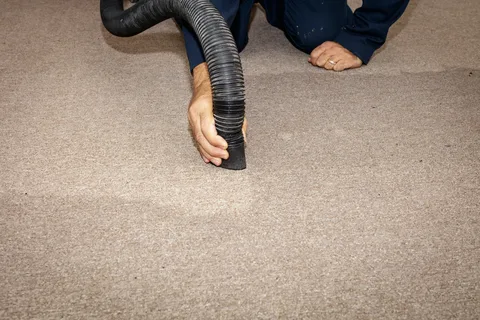In-Home Drug Detox: What to Expect and How It Works
For individuals struggling with substance abuse, detoxing at home might seem like a convenient and private option. In-home drug detox can be challenging and risky without proper guidance. The experience can vary depending on the substance and the individual’s overall health. In-home drug detox can involve uncomfortable withdrawal symptoms and emotional challenges. It is important to understand what to expect. The following is an elaborative article on the essential steps and considerations for detoxing safely at home.
What is an In-Home Drug Detox?
Detoxing at home involves stopping the use of drugs or alcohol in a non-clinical environment, usually without professional medical supervision. During this time, the body clears the substance, and withdrawal symptoms may occur. These symptoms depend on factors such as the type of drug, length of use, and the individual’s health, something that can be physically and mentally challenging.
Withdrawal Symptoms During In-Home Detox
Withdrawal is the body’s response to the absence of the substance it has become dependent on. The symptoms can range from mild discomfort to severe health issues, depending on the drug involved. Mild symptoms may include headaches, nausea, sweating, or muscle aches. On the other hand, severe symptoms such as seizures, hallucinations, and delirium tremens can occur, especially with alcohol and benzodiazepine detoxes. It is crucial to have a support system in place to help manage these symptoms.
Duration of In-Home Drug Detox
The duration of detox can vary from a few days to a couple of weeks, depending on the substance and how long it was used. Typically, the first few days are the most intense, as this is when the worst withdrawal symptoms appear. As the body adjusts, symptoms gradually ease, but cravings and emotional challenges can persist. Having a structured routine and support during this period is essential to avoid relapse.
Managing Risks of In-Home Detox
Detoxing at home without medical supervision can carry significant risks, particularly for those detoxing from alcohol, opioids, or benzodiazepines. These substances can lead to life-threatening withdrawal symptoms. It is recommended to consult with a healthcare provider before beginning in-home drug detox. They can advise on medications to manage symptoms and recommend whether detoxing at home is appropriate for the individual’s situation.
Emotional and Psychological Impact
Detox is not just a physical process. Emotional and psychological withdrawal symptoms, such as anxiety, depression, and irritability, are common. These symptoms can be as difficult to manage as physical symptoms. Emotional support from friends, family, or a counselor can make detox more manageable.
Aftercare and Support
Detox is only the first step in overcoming addiction. After completing in-home drug detox, it is crucial to continue with addiction treatment to address the root causes of substance use. Therapy, support groups, or outpatient treatment can help prevent relapse and offer tools for long-term recovery. A successful detox sets the foundation, but ongoing support is critical to staying sober.
Conclusion
In-home drug detox can be an option for some, but it is important to be aware of the risks and challenges involved. The physical, emotional, and mental aspects of detox require careful management, and having the right support is essential. If you are considering detoxing at home, consult a healthcare professional for advice and guidance on the safest way to proceed. Taking the necessary precautions ensures a safer path toward recovery and a drug-free life.
FAQ
1. What is in-home drug detox, and how does it work?
In-home drug detox involves undergoing detoxification from drugs in the comfort of your own home, supervised by medical professionals. A team of healthcare providers (nurses, doctors, or therapists) visits your home to administer medications, monitor vital signs, and provide support throughout the withdrawal process. This approach offers personalized care in a familiar environment.
2. Is in-home drug detox safe?
Yes, when performed under the supervision of trained medical professionals, in-home detox is generally safe. It is most appropriate for individuals with mild to moderate addiction or for those who have completed prior detoxes. However, it may not be recommended for individuals with severe substance use disorders, co-occurring mental health issues, or a history of complicated withdrawal symptoms.
3. What are the benefits of in-home detox compared to facility-based detox?
- Comfort and Privacy: Detoxing at home provides a more comfortable and private setting, which can reduce stress and anxiety.
- Flexibility: In-home detox allows individuals to continue with certain daily routines or responsibilities while receiving care.
- Personalized Care: The medical team tailors the treatment plan to the individual’s specific needs, offering more one-on-one attention.
- Lower Costs: It may be less expensive than inpatient detox programs, which require hospitalization or residential stays.
4. What withdrawal symptoms can I expect during in-home detox?
Withdrawal symptoms depend on the substance being detoxed from, but common symptoms include:
- Physical symptoms: Nausea, vomiting, muscle aches, sweating, and headaches.
- Psychological symptoms: Anxiety, depression, irritability, and mood swings. In-home medical staff will monitor symptoms closely and may prescribe medications to alleviate discomfort, such as anti-nausea drugs, sleep aids, or medication-assisted treatments like methadone or buprenorphine for opioid detox.
5. How long does in-home drug detox take?
The duration of in-home detox depends on the type of drug, the severity of the addiction, and the individual’s overall health. Typically, detox lasts between 5 to 10 days but can be shorter or longer. A detailed plan will be made by the medical team during the initial assessment to determine the appropriate detox timeline.






